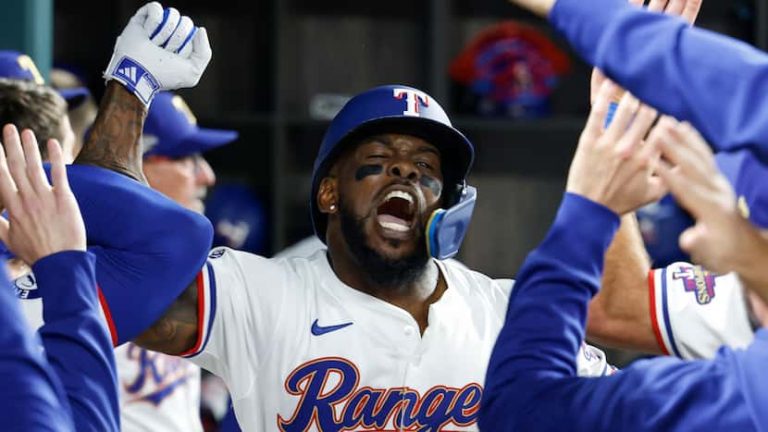Here’s everything you need to know about the MLB All-Star Home Run Derby, which takes place Monday night at 7pm CST at Globe Life Field. The event will be broadcast on ESPN.
Who makes up the field?
The eight contestants include seven All-Stars and local favorite Adolis Garcia, who is competing for the second straight year. Topping the field is Baltimore’s Gunnar Henderson, who also stars two-time Derby winner Pete Alonso of the New York Mets, Colleyville’s Bobby Witt Jr. (Kansas City), Jose Ramirez (Cleveland), Alec Bohm (Philadelphia), Marcell Ozuna (Atlanta) and Teoscar Hernandez (Los Angeles Dodgers).
Are tickets still available?
MLB.com listed a limited number of seats remaining, starting at $425, but the outfield seats where the home runs will be hit were all sold out.
who do you like the most?
With MLB’s top two home run hitters, Aaron Judge of the Yankees and Shohei Ohtani of Los Angeles, both out, Henderson, who started Sunday with 26, has the most home runs this year. But Alonso is a two-time champion and is currently the favorite at +310, according to BetMGM, followed by Ozuna and Garcia. This tournament tends to favor players with previous experience and who know how to pace themselves well.
Has a local ever won?
The Derby has been held three times since its inception in 1985, most recently in 2018 when Bryce Harper won for Washington. Todd Frazier, then with the Reds, won for Cincinnati in 2015, and the Cubs’ Ryne Sandberg won at Wrigley Field in 1990.
Don’t underestimate Garcia: He’s the all-time leader in home runs at Globe Life Field with 67, and he loves to please the crowd.
What are the rules?
It’s the Home Run Derby, right? It seems so simple — hit more home runs than the other team — but MLB and ESPN add new elements almost every year, which keeps the derby fresh, but can also get a little harder to follow from year to year.
This year, MLB did away with the first-round bracket. The eight batters are allowed three minutes or up to 40 pitches (whichever comes first) to hit as many home runs as possible. Once the threshold is reached, the batter gets three more “bonus outs” (each swing can be either a home run or an out). If the player hits a home run of at least 425 feet within the bonus period, he gets a fourth bonus out. The top four players advance to a bracket-formatted semifinal, with the top home run hitter facing the No. 4 hitter and the No. 2 hitter facing the No. 3 hitter. In the event of a tie, it is broken by the longest home run hitter. The same time and bonus rules apply to the semifinals.
In the final game, batters are allowed two minutes or 27 pitches, whichever comes first. The same bonus rules apply.
Why have the rules changed this time?
The “strategy” of the game these days has become more about how many swings you can make in a given amount of time. The pitch limit was meant to improve the experience for fans, as multiple balls were in the air at the same time in recent years. Tampa Bay’s Randy Arozarena took 57 swings in the first round last year, making it hard for fans to follow the ball’s trajectory. The adjustment was designed to strike a balance between watching the epic distances of home runs and making the total number of home runs look high.
Has a ranger ever won this?
Yes, Juan Gonzalez beat Ken Griffey Jr. on a “swing-off” in Baltimore in 1993, but Griffey stole the show with a home run from the B&O Warehouse behind Orioles Park at Camden Yards, and Ruben Sierra was declared co-winner in 1989 along with Cincinnati’s Eric Davis.
Didn’t Josh Hamilton win?
Well, yes and no. Hamilton had the best round in Home Run Derby history in 2008, hitting 28 home runs at Yankee Stadium. It was the most home runs in a single round. But he was exhausted by the end of the round. He lost in the final to Minnesota’s Justin Morneau. Hamilton won the hearts of the fans, and Morneau won the championship.
See more Rangers coverage from the Dallas Morning News here:

